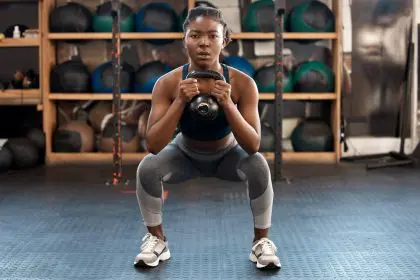The weighted backpack carefully positioned against her spine, Sarah Mitchell strides purposefully through Central Park’s winding paths at dawn. She’s among thousands discovering rucking, a military training technique turned mainstream fitness phenomenon that’s transforming ordinary walks into high-impact workouts.
Understanding the fundamentals
The premise is deceptively simple: add weight to a backpack and walk. Yet this straightforward concept, deeply rooted in military training protocols, has sparked a fitness revolution. Rucking amplifies the benefits of walking by engaging multiple muscle groups simultaneously, turning a basic movement into a comprehensive strength and endurance workout. Unlike traditional cardio, which primarily targets the lower body, rucking forces the upper body and core to stabilize the additional weight, creating a full-body training experience.
The accessibility of rucking has played a significant role in its rising popularity. Unlike running, which can be hard on the joints, rucking provides a lower-impact alternative while still delivering cardiovascular benefits. It also appeals to those who want a strength-building workout without stepping into a gym. With nothing more than a backpack and some added weight, anyone can incorporate rucking into their routine and experience its transformative effects.
The science behind the weight
Research demonstrates that adding resistance to walking significantly increases caloric burn and muscle activation. The body must work harder to maintain posture and balance, engaging core muscles, shoulders, and back in ways that regular walking cannot achieve. This enhanced engagement leads to improved posture, increased bone density, and superior cardiovascular conditioning.
The biomechanics of rucking explain its effectiveness. The added weight forces the posterior chain—comprising the glutes, hamstrings, and lower back—to work harder with each step. Simultaneously, the core and upper body must stabilize the load, reducing the likelihood of slouching and improving spinal alignment. Over time, these adaptations contribute to enhanced endurance, better muscular coordination, and even reduced risk of chronic pain associated with poor posture.
Another key benefit of rucking is its ability to build functional strength. Unlike isolated weightlifting exercises, which target specific muscle groups, rucking mimics real-world movement patterns. Carrying groceries, lifting children, and performing daily physical tasks all require the ability to move efficiently while bearing weight. By strengthening muscles in a way that mirrors everyday activities, rucking enhances overall mobility and resilience.
Starting your rucking journey
Success in rucking demands a methodical approach. Begin with a lightweight pack—no more than 10-15 pounds—and focus on maintaining proper form during shorter walks. As strength and endurance build, gradually increase both weight and distance. The key is progressive overload, allowing the body to adapt without risking injury.
Proper posture remains critical. Keep the chest up, shoulders back, and engage the core to prevent excessive strain on the lower back. The weight should sit high on the back, close to the body’s center of gravity, to maintain balance and minimize discomfort. Short, controlled strides reduce impact on the joints and ensure efficient energy use.
For those just starting, consistency matters more than intensity. Walking two to three times per week with manageable weight lays the foundation for long-term progress. As endurance improves, incorporating longer distances or varied terrain helps to further challenge the body and promote continuous adaptation.
Essential equipment and preparation
Investing in proper equipment marks the difference between comfort and potential injury. A well-fitted rucksack with padded shoulder straps and secure weight distribution is essential. Proper footwear with adequate support helps prevent stress on joints and muscles during extended rucking sessions.
Backpacks designed specifically for rucking often feature reinforced stitching, ergonomic padding, and compartments for weight distribution. Some fitness brands manufacture weighted plates designed to fit securely within rucksacks, providing a stable and balanced load. While household items like books or water bottles can serve as makeshift weights, using properly designed equipment minimizes shifting and discomfort.
Footwear selection is equally important. Rucking places additional strain on the feet and ankles, making cushioned insoles and strong arch support crucial. Hiking boots or durable running shoes provide the necessary stability, especially for those rucking on uneven terrain. Preventing blisters and foot fatigue through proper footwear can make the difference between an enjoyable experience and an exhausting one.
Advanced techniques and progression
As practitioners advance, they can incorporate varied terrain and elevation changes to increase workout intensity. Urban ruckers often combine their weighted walks with bodyweight exercises at predetermined stops, creating a comprehensive circuit training experience. The versatility of rucking allows for continuous evolution of workout intensity and complexity.
Increasing load gradually prevents excessive strain on the body. The recommended guideline is to progress by 5-10% increments in weight or distance every few weeks. Additionally, integrating movements like lunges, squats, and step-ups during rucks enhances muscular endurance and power. Some experienced ruckers take on endurance challenges, participating in community-led events that test their stamina over extended distances.
While rucking is often an individual pursuit, it has also fostered a sense of camaraderie among participants. Groups of enthusiasts gather in cities across the country, sharing their experiences and pushing each other to reach new milestones. These social connections enhance accountability and enjoyment, making rucking more than just a workout—it’s becoming a lifestyle movement.
Safety considerations and best practices
While rucking presents lower impact risks compared to running, proper form remains crucial. Maintain an upright posture, engage core muscles, and stay aware of body mechanics throughout the workout. Regular equipment checks and gradual progression help prevent common injuries associated with overuse or improper technique.
Listening to the body is key. Soreness is natural, but sharp pain signals a need for adjustment—whether that means reducing weight, modifying posture, or taking rest days. Hydration and nutrition also play roles in recovery. Carrying extra weight increases caloric expenditure, meaning ruckers should replenish lost energy with balanced meals and adequate hydration.
The transformation of military training into an accessible civilian fitness practice demonstrates rucking’s versatility and effectiveness. As more people discover this efficient workout method, its popularity continues to grow, proving that sometimes the simplest innovations yield the most significant results.














